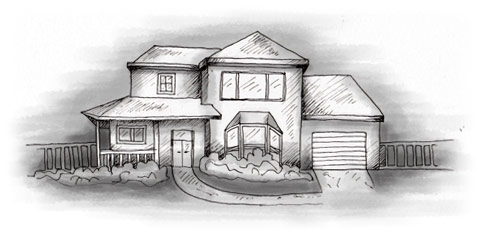Obtain details of as many properties as possible in your chosen area and make a shortlist of those you wish to view (it’s also wise to mark them on a map). Traditionally, the details provided by Italian estate agents are sparse. Often there’s no photograph; even when there is, it usually doesn’t do a property justice (or is flattering). However, the advent of the Internet has changed this somewhat, and most serious agents have extensive websites providing details of properties they offer, although not all properties are included on them and you may need to register to view those that are. Italian agents who advertise in foreign journals or who work closely with overseas agents may provide colour photographs and a full description, particularly for expensive properties.
The best agents provide an abundance of information, although, in the case of old properties in need of renovation, there obviously isn’t much information that can be given except the land area and the number and size of buildings.
If you’ve made an appointment via a foreign agent to see particular properties, make a note of their reference numbers in case the Italian agent hasn’t been informed (or has lost them). It isn’t unusual for an Italian agent’s reference numbers not to match those you’re given by an agent abroad! Some agents, particularly outside Italy, don’t update their records frequently and their lists may be considerably out of date.
SURVIVAL TIP
If you’re using a foreign agent, confirm (and reconfirm) that a particular property is still for sale and the price before travelling to Italy to view it.
Some Italian agents expect customers to know where they want to buy within a 30 to 40km (20 to 25mi) radius and may even expect you to narrow your choice down to certain towns or villages. If you cannot define where and what you’re looking for, tell the agent so that he will know that you’re undecided. If you’re ‘just looking’ (window shopping), say so. Most agents will still be pleased to show you properties, as they’re well aware that many people fall in love with (and buy) a property on the spot, but some agents now charge a fee (e.g. €50 for an afternoon) for showing properties in order to discourage time wasters.
An Italian agent may ask you to sign a document before showing you any properties; this is simply to protect his commission should you obtain details from another source or try to do a deal directly with the owner. You’re usually shown properties personally by agents and won’t be given the keys (particularly to furnished properties) or be expected to deal with tenants or vendors directly. One reason is that many properties are almost impossible to find if you don’t know the area and it isn’t unknown even for agents to get lost when looking for properties! Many rural properties have no numbers, and street names may not be marked. (If someone invites you to dinner in Italy, make sure you have a telephone number for when you get lost!)
You should make an appointment to see properties, as agents don’t like people simply turning up and asking to view a property. If you make an appointment, you should keep it or call and cancel it. If you’re on holiday, you can drop in unannounced to have a look at what’s on offer, but don’t expect an agent to show you any properties. If you view properties during a holiday, it’s wise to do so at the beginning so that you can return later to inspect any you particularly like a second or third time. Italian estate agents usually work on Saturdays and even on Sundays in some areas during the peak season.
You should try to view as many properties as possible during the time available, but allow enough time to view each property thoroughly, to travel and get lost between houses, and for breaks for sustenance (it’s mandatory to have a good lunch in Italy). Although it’s important to see sufficient properties to form an accurate opinion of price and quality, don’t see too many in one day (between four and six is usually a manageable number) as it’s easy to become confused as to the merits of each property. If you’re shown properties that don’t meet your requirements, tell the agent immediately. You can help the agent to narrow the field by telling him exactly what’s wrong with the properties you reject.
It’s wise to make notes of both the good and bad features, and take lots of photographs of the properties you like, so that you’re able to compare them later at your leisure, but keep a record of which photos are of which house! It’s also wise to mark each property on a map so that, should you wish to return, you can find them without getting lost (too often). The more a property appeals to you, the more you should look for faults and negative points; if you still like it after stressing the negative points, it must have special appeal!
This article is an extract from Buying a Home in Italy from Survival Books.

